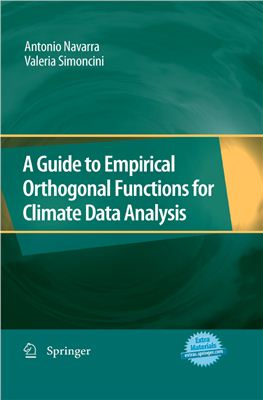London: Springer, 2010. - 152 p.
Рассмотрены современные методы анализа пространственно-временных данных методом естественных (эмпирических) ортогональных функций (ЕОФ) и его разновидностей. Этот метод стал за последние десятилетия одним из основных рабочих инструментов в метеорологии, физике атмосферы и океана.
EOF- methods were introduced to meteorology in themid-1960, but they became increasingly popular in the early 1980s where their capability to identify dynamically significant modes in the climate variability was demonstrated. Since then they have been further developed and many variants and extensions have been proposed and applied. Very often these developments were taking place separately from the formal development in the mainstream statistics and reflected ad hoc solution to the particular vies that climatology was using.
Рассмотрены современные методы анализа пространственно-временных данных методом естественных (эмпирических) ортогональных функций (ЕОФ) и его разновидностей. Этот метод стал за последние десятилетия одним из основных рабочих инструментов в метеорологии, физике атмосферы и океана.
EOF- methods were introduced to meteorology in themid-1960, but they became increasingly popular in the early 1980s where their capability to identify dynamically significant modes in the climate variability was demonstrated. Since then they have been further developed and many variants and extensions have been proposed and applied. Very often these developments were taking place separately from the formal development in the mainstream statistics and reflected ad hoc solution to the particular vies that climatology was using.

